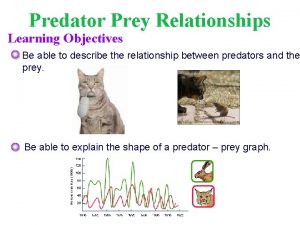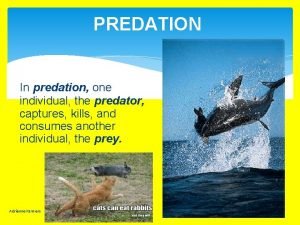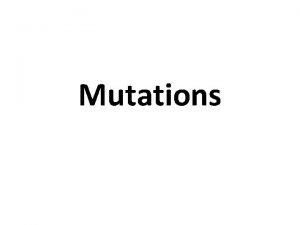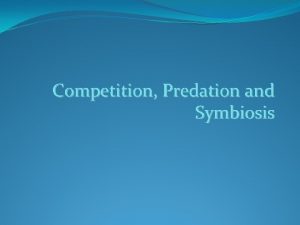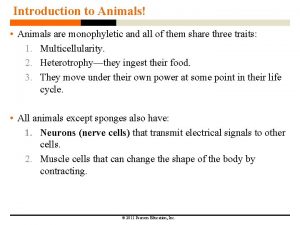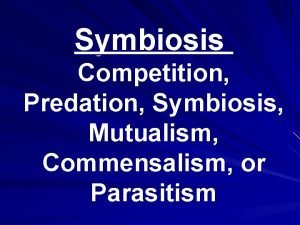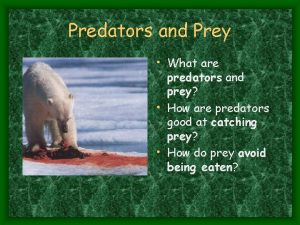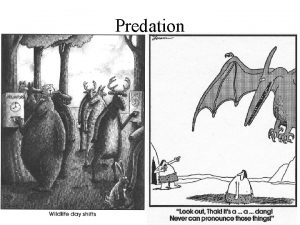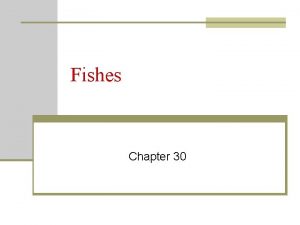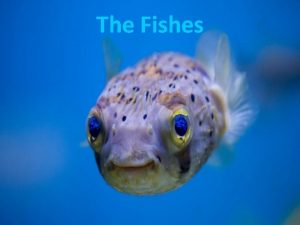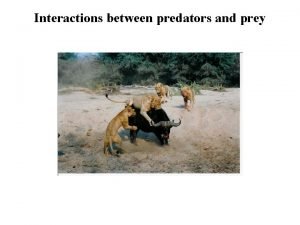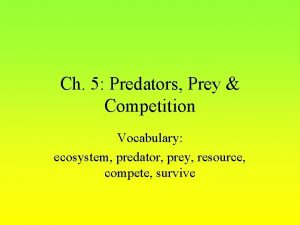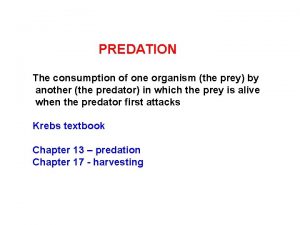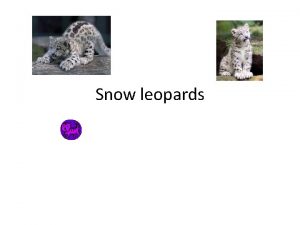Fishes as prey avoiding predation Avoidance of predators


















- Slides: 18

Fishes as prey: avoiding predation Avoidance of predators Adaptations of prey

Predator – Prey arms race • Co-evolution of predatory and escape mechanisms – Morphological adaptations – Behavioral adaptations – Ecological adaptations “there is no perfect predatory nor perfect escape tactic”

Predation Cycle • • • Search Pursuit Attack Capture Handling of Prey

Detection avoidance • Camouflage (avoidance of visual predators) Appearance of something unrecognizable Disappearance - become invisible – Protective resemblance • Resemble background • Resemble inedible objects • Resemble predators

Detection avoidance • Camouflage (avoidance of visual predators) Appearance of something unrecognizable Disappearance - become invisible – Protective resemblance • Resemble background • Resemble inedible objects • Resemble predators – Disruptive coloration • Daytime • Nightime

Detection avoidance • Pelagic camouflage (avoidance of visual predators) – Countershading

Looking upwards Looking downwards

Looking downwards


Detection avoidance • Pelagic camouflage (avoidance of visual predators) – Countershading – Mirror sides

Mirror Sides

Detection avoidance • Pelagic camouflage (avoidance of visual predators) – Countershading – Mirror sides – Transparency

Detection avoidance • Pelagic camouflage (avoidance of visual predators) – Countershading – Mirror sides – Transparency – Counterillumination (Bioluminescence)

Hatchetfish Myctophid lanternfish

Detection avoidance • Pelagic camouflage (avoidance of visual predators) – Countershading – Mirror sides – Transparency – Counterillumination (Bioluminescence) • Olfaction avoidance (Avoidance of olfactory predators) – Mucous cocoon

Pursuit evasion • Morphological adaptations – Stout and/or sharp spines – Poisonous spines – Toxic fishes Usually with Aposematic Coloration (but not always)

Pursuit evasion • Morphological adaptations – Stout and sharp spines – Poisonous spines – Toxic fishes Usually with Aposemotic Coloration • Behavioral adaptations – Use of bottom shelter – Use of holes and caves – Flying

Capture and Handling discouragement • Body armours • Long dorsal and anal spines • Extra deep bodies • Inflation • Erection of sharp spines ….
 Predator prey relationship examples
Predator prey relationship examples Kinkajou predators
Kinkajou predators Adaptation of prey
Adaptation of prey Types of parasitism
Types of parasitism Gary polis
Gary polis Organism
Organism Predation
Predation Predation vs parasitism
Predation vs parasitism Neutral mutation
Neutral mutation Parasitism vs predation
Parasitism vs predation Difference between predation and parasitism
Difference between predation and parasitism Mutualism commensalism parasitism predation competition
Mutualism commensalism parasitism predation competition Owl conflict management style
Owl conflict management style Avoiding fragments and run-ons
Avoiding fragments and run-ons Avoiding the sun
Avoiding the sun Avoiding run on sentences
Avoiding run on sentences What's the best strategy for avoiding atm fees?
What's the best strategy for avoiding atm fees? Position use in nursing
Position use in nursing A national policy of avoiding involvement in world affairs
A national policy of avoiding involvement in world affairs
